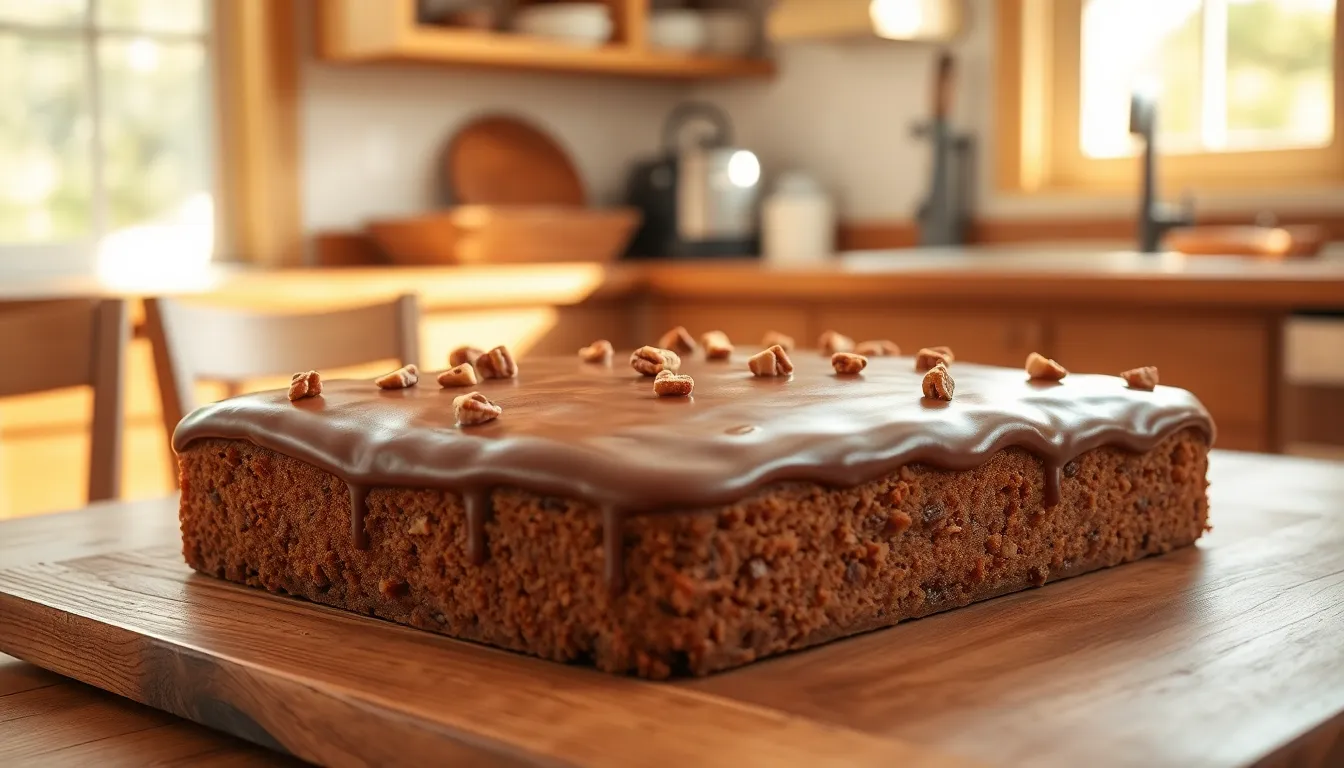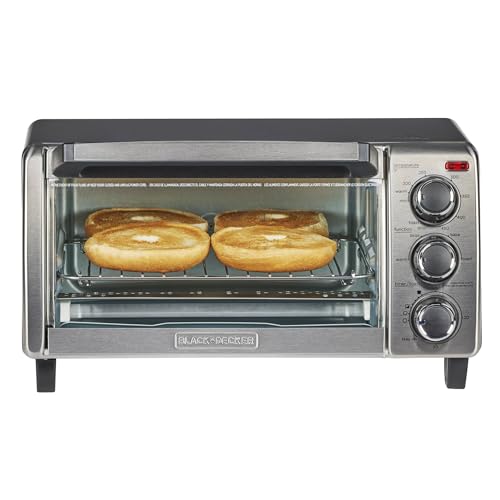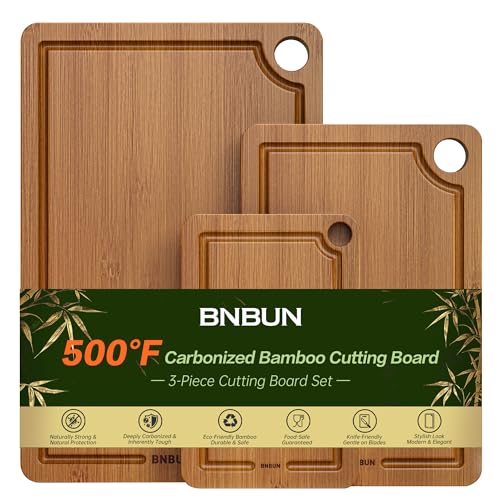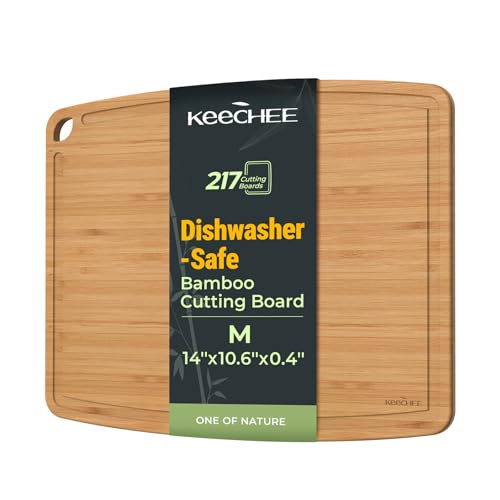Ingredients
This Texas sheet cake recipe requires simple pantry staples that come together to create an incredibly moist and decadent dessert. You’ll need ingredients for both the cake base and the signature warm chocolate frosting that gets poured over the cake while it’s still hot.
For the Cake
- 2 cups all-purpose flour
- 2 cups granulated sugar
- 1 teaspoon baking soda
- 1/2 teaspoon salt
- 1 cup (2 sticks) unsalted butter
- 1 cup water
- 1/4 cup unsweetened cocoa powder
- 2 large eggs, room temperature
- 1/2 cup buttermilk
- 1 teaspoon vanilla extract
- 1/2 cup hot brewed coffee
For the Chocolate Frosting
- 1/2 cup (1 stick) unsalted butter
- 1/4 cup unsweetened cocoa powder
- 6 tablespoons whole milk
- 1 pound (about 4 cups) powdered sugar
- 1 teaspoon vanilla extract
- 1/4 teaspoon salt
- 1 cup chopped pecans (optional)
Equipment Needed
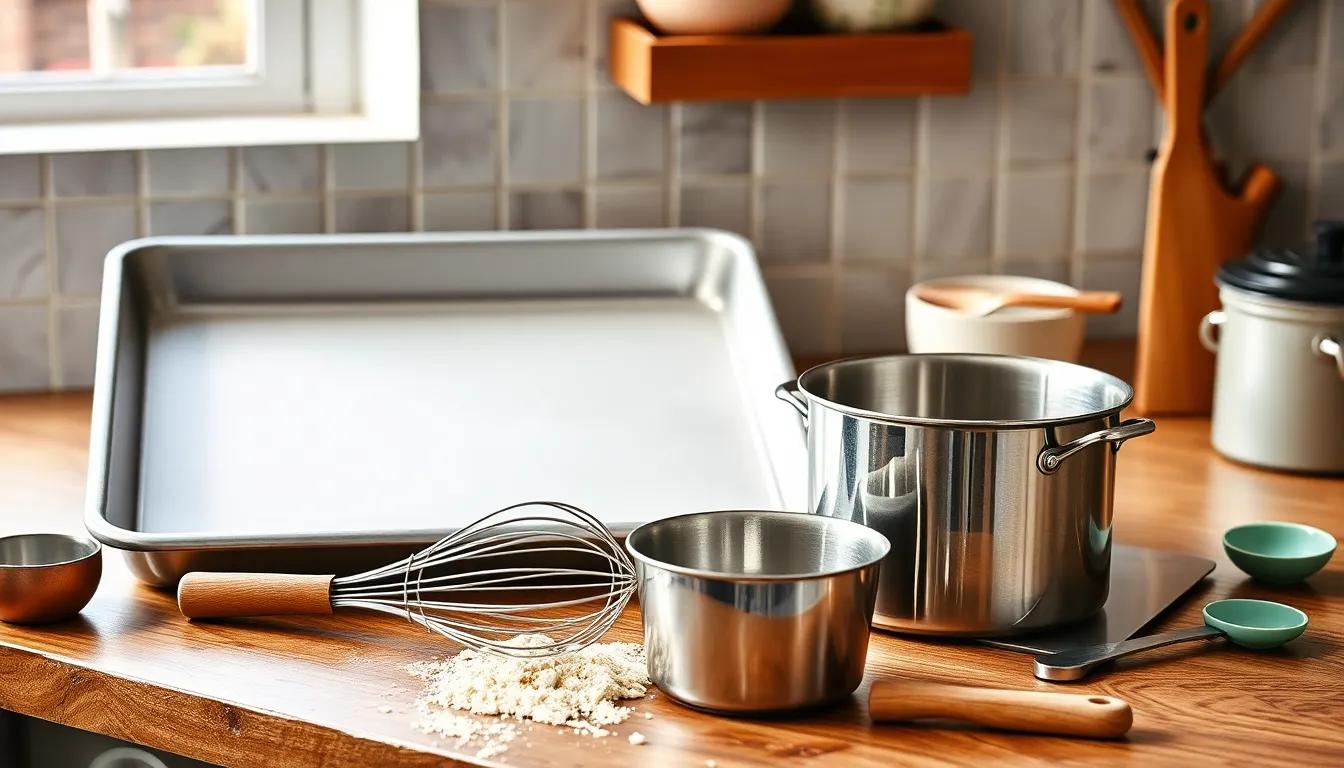
You’ll need a few essential tools to create this delicious Texas sheet cake successfully. Start by gathering a large rimmed baking sheet or jelly roll pan measuring 18×13 inches to accommodate the generous size of this crowd-pleasing dessert.
Essential Baking Equipment:
- 18×13-inch rimmed baking sheet or jelly roll pan
- Large mixing bowl for combining dry ingredients
- Medium saucepan for heating butter mixture
- Wire whisk for smooth batter consistency
- Rubber spatula for scraping bowl sides
- Measuring cups and spoons for accurate portions
Additional Tools:
- Electric mixer (hand or stand mixer) for optimal frosting texture
- Fine-mesh sieve for sifting cocoa powder
- Offset spatula for spreading frosting evenly
- Kitchen scale for precise measurements (optional but recommended)
Your baking sheet should have at least 1-inch high sides to contain the batter properly. A light-colored metal pan works best for even browning and prevents the bottom from cooking too quickly.
The medium saucepan needs enough capacity to hold the butter and water mixture without overflow when it comes to a boil. Choose a heavy-bottomed pan to distribute heat evenly and prevent scorching the chocolate mixture.
Your electric mixer will create the smoothest frosting texture when beating the warm chocolate mixture. A hand mixer works perfectly fine for this recipe and provides better control when incorporating the powdered sugar gradually.
Keep parchment paper nearby for easy cleanup though greasing the pan works equally well for this particular recipe.
Instructions
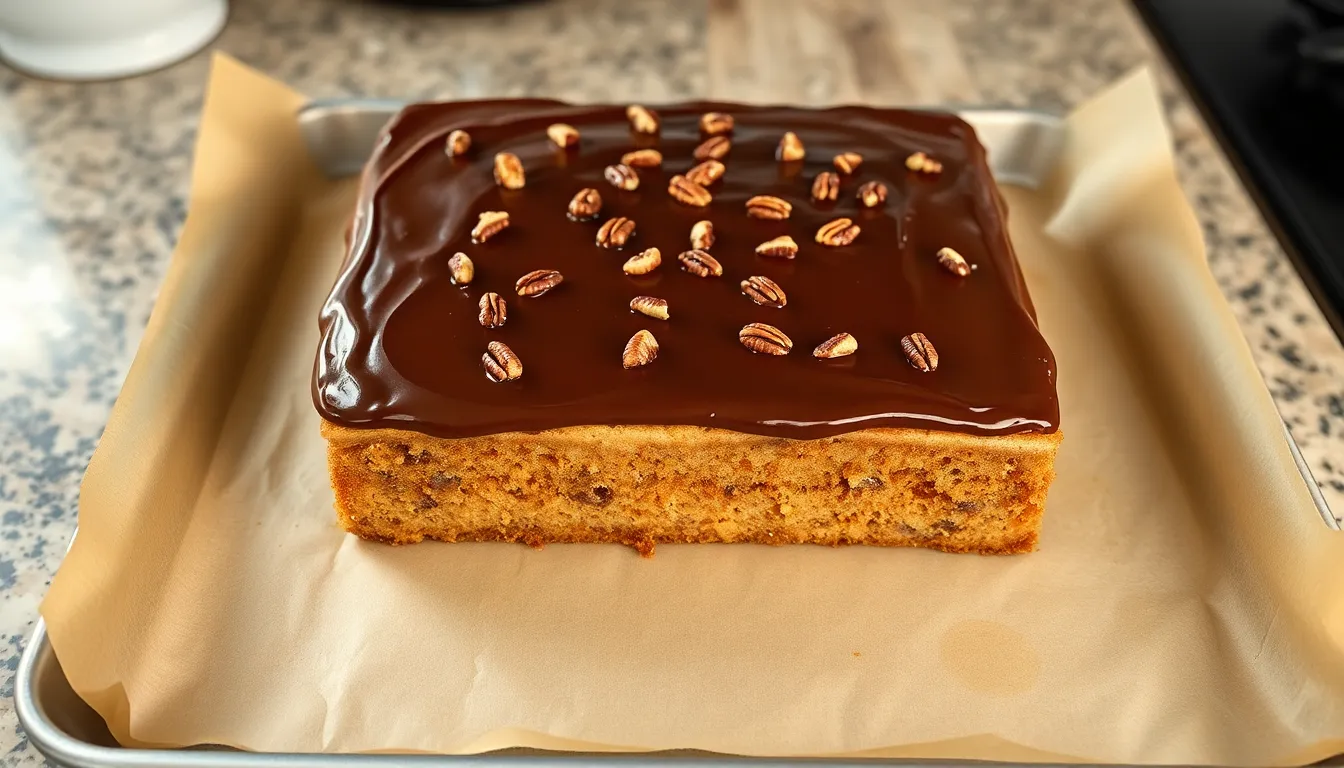
Follow these step-by-step instructions to create your perfect Texas sheet cake with its signature warm chocolate frosting. The key to success lies in timing and working quickly while the cake is still warm.
Prep the Pan and Oven
Preheat your oven to 350°F. Line your 18×13-inch rimmed baking sheet with parchment paper, leaving a 2-inch overhang on the long sides for easy removal. Lightly grease the parchment paper with butter or cooking spray to prevent sticking.
Make the Cake Batter
Whisk together 2 cups all-purpose flour, 2 cups granulated sugar, 1 teaspoon baking soda, and 1/2 teaspoon salt in your large mixing bowl. Set this dry mixture aside while you prepare the wet ingredients.
Combine 1 cup unsalted butter, 1 cup water, and 1/4 cup cocoa powder in your medium saucepan. Bring this mixture to a rolling boil over medium-high heat, stirring constantly to prevent scorching. Remove from heat immediately once it reaches a full boil.
Pour the hot chocolate mixture over your dry ingredients and whisk vigorously until smooth. Beat in 2 large eggs one at a time, ensuring each is fully incorporated before adding the next. Stir in 1/2 cup buttermilk, 1 teaspoon vanilla extract, and 1/2 cup hot brewed coffee until the batter is completely smooth and glossy.
Bake the Cake
Pour the batter into your prepared baking sheet, using your rubber spatula to spread it evenly to all corners. The batter will be thin, which creates the cake’s signature tender texture.
Bake for 18-22 minutes, or until a toothpick inserted in the center comes out with just a few moist crumbs attached. The surface should spring back lightly when touched in the center.
Prepare the Frosting
Start making your frosting about 5 minutes before the cake finishes baking. Melt 1/2 cup unsalted butter in your medium saucepan over medium heat. Whisk in 1/4 cup cocoa powder until smooth and no lumps remain.
Add 1/3 cup whole milk and bring the mixture to a gentle simmer, whisking continuously. Remove from heat and gradually whisk in 4 1/2 cups powdered sugar, 1 teaspoon vanilla extract, and 1/4 teaspoon salt until the frosting is smooth and spreadable. Stir in 1 cup chopped pecans if using.
Frost the Warm Cake
Remove the cake from the oven and immediately pour the warm frosting over the hot cake. Use your offset spatula to spread the frosting evenly across the entire surface, working quickly before it begins to set. The heat from the cake will help the frosting flow smoothly and create a glossy finish that soaks slightly into the top layer.
Allow the cake to cool completely in the pan for at least 2 hours before cutting into squares and serving.
Directions for Perfect Results
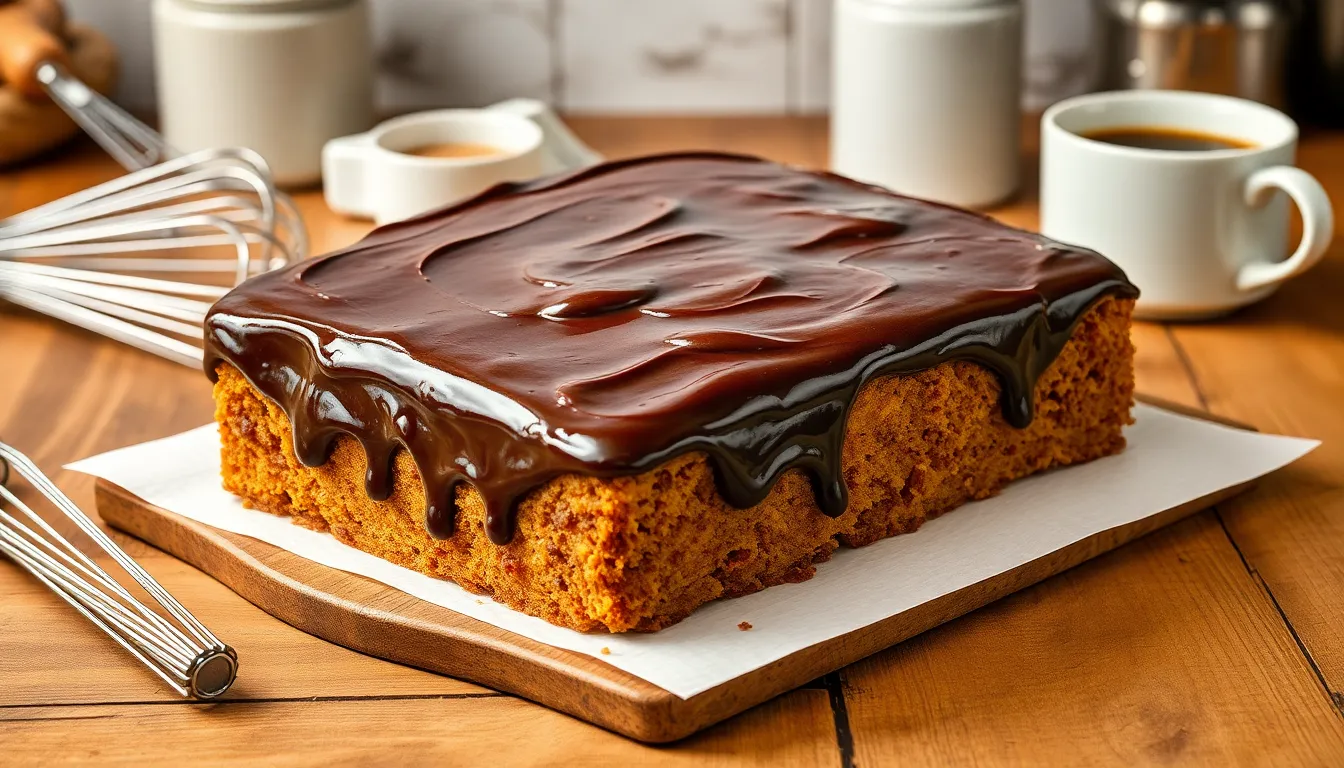
Following the right techniques ensures your Texas sheet cake delivers the signature moist texture and glossy frosting that makes this dessert legendary. Master these key methods to achieve bakery-quality results every time.
Tips for Moist Cake
Use room temperature ingredients for even mixing and optimal texture development. Your eggs buttermilk and vanilla should sit out for 30 minutes before starting the recipe. Hot coffee serves as the secret ingredient that intensifies chocolate flavor while adding moisture to the crumb. Pour the coffee into your batter while it’s still steaming for maximum effect.
Avoid overmixing the batter once you add wet ingredients to the dry mixture. Gentle folding preserves the tender crumb structure that defines authentic Texas sheet cake. Your batter should look slightly lumpy rather than perfectly smooth when you pour it into the prepared pan.
Check for doneness using the toothpick test but remove the cake when crumbs are still slightly moist. The residual heat continues cooking the cake while it cools creating the perfect fudgy consistency. Overbaking results in dry cake that loses the characteristic dense moistness.
Frosting Application Technique
Prepare your frosting while the cake bakes so both components are hot when combined. The timing creates the signature glossy finish that sets Texas sheet cake apart from other chocolate desserts. Your frosting should be warm and pourable but not so hot that it slides off the cake.
Pour the frosting over the center of the hot cake immediately after removing it from the oven. Use an offset spatula to gently spread the frosting to the edges working quickly before it begins to set. The heat from the cake helps the frosting flow smoothly and creates an even coating.
Allow the frosting to settle naturally into any small gaps or imperfections in the cake surface. Resist the urge to smooth or manipulate the frosting once spread as this can create streaks or pull up cake crumbs. The warm frosting will level itself and develop a beautiful sheen as it cools.
Make-Ahead Instructions
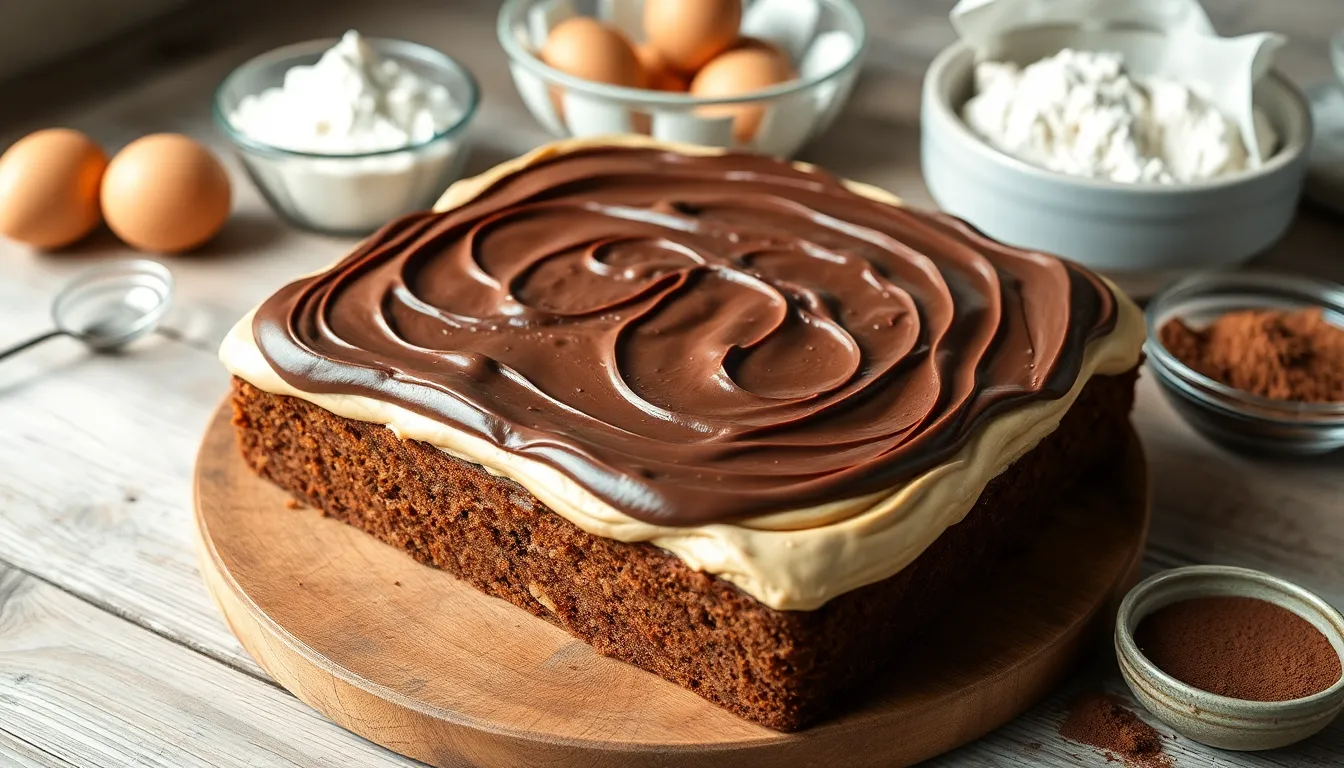
You can prepare Texas sheet cake up to three days in advance, making it perfect for planned gatherings and busy schedules. The cake actually improves in flavor and texture when made ahead, as the chocolate notes deepen and the frosting sets to create an even more decadent dessert.
Preparing Components Separately
Dry Ingredients: Measure and whisk together flour, sugar, baking soda, and salt up to one week before baking. Store this mixture in an airtight container at room temperature until ready to use.
Cake Batter: Mix the complete batter up to two hours before baking and keep it covered in the refrigerator. Bring the batter to room temperature for 15 minutes before pouring into your prepared pan for even baking.
Full Cake Assembly Timeline
Bake your Texas sheet cake completely and apply the warm frosting as directed in the main recipe. Allow the cake to cool completely in the pan, then cover tightly with plastic wrap or aluminum foil. Store at room temperature for up to three days or refrigerate for up to one week.
Storage Guidelines
| Storage Method | Duration | Temperature |
|---|---|---|
| Room temperature (covered) | 3 days | 68-72°F |
| Refrigerated (covered) | 1 week | 35-40°F |
| Frozen (wrapped tightly) | 3 months | 0°F |
Serving After Storage
Remove refrigerated cake from the fridge 30 minutes before serving to restore its signature moist texture. Cut into squares while still slightly cool for clean edges, or serve at room temperature for the fullest chocolate flavor experience.
Frozen cake sections thaw beautifully at room temperature in 2-3 hours. You can also thaw individual squares in the microwave for 20-30 seconds for an immediate warm dessert that tastes freshly made.
Storage and Serving
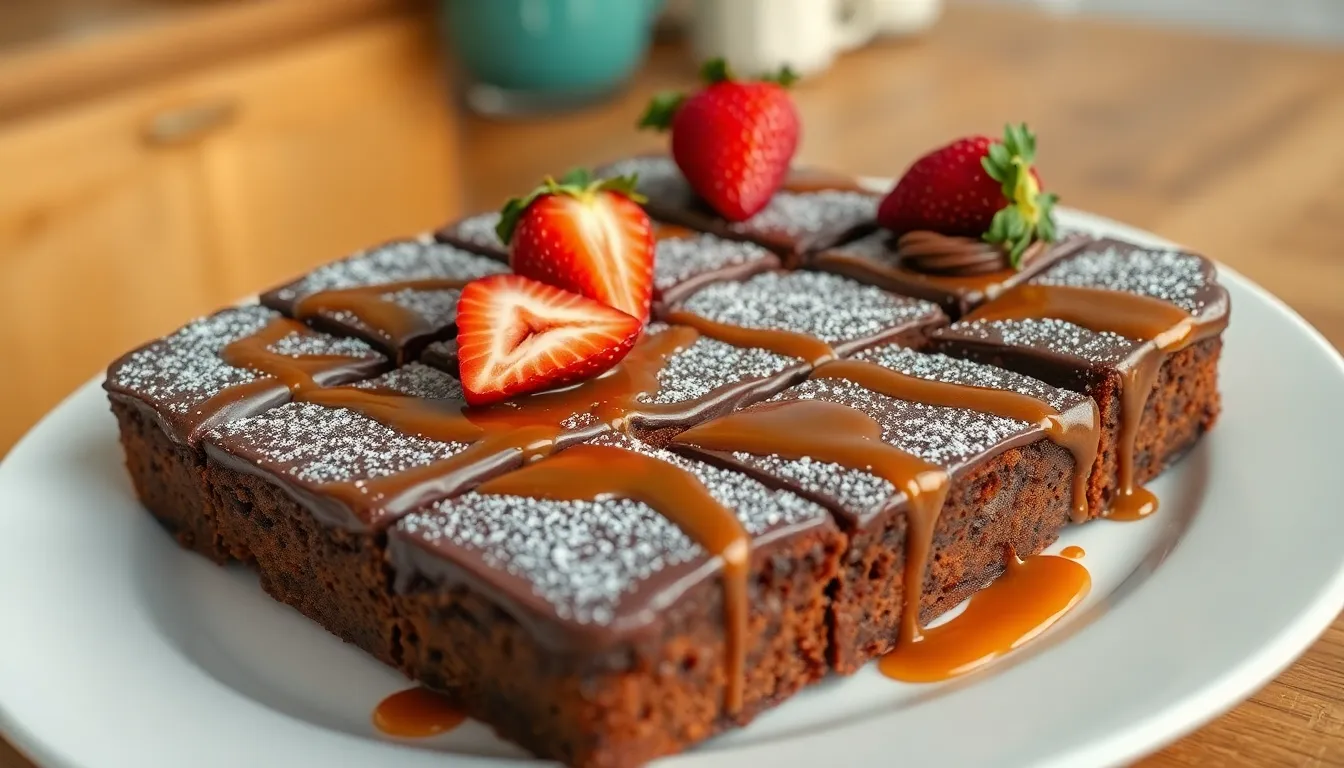
Your Texas sheet cake stays fresh and delicious for days when stored properly. The cake actually improves in flavor and texture after the first day as the frosting fully sets.
How to Store
Store your Texas sheet cake covered at room temperature for up to three days. Place plastic wrap directly over the cake surface or cover the entire pan with aluminum foil to prevent the frosting from drying out.
Refrigerate the cake for extended storage lasting up to one week. Wrap the pan tightly with plastic wrap or transfer individual squares to an airtight container. Remove the cake from the refrigerator 30 minutes before serving to bring it to room temperature for the best texture and flavor.
Freeze Texas sheet cake for long-term storage up to three months. Cut the cake into individual squares and wrap each piece in plastic wrap before placing them in freezer bags. Label with the date and remove air from the bags to prevent freezer burn.
Thaw frozen cake squares at room temperature for 2-3 hours or microwave individual pieces for 15-20 seconds for a warm dessert. The frosting maintains its glossy appearance and rich chocolate flavor even after freezing.
Serving Suggestions
Cut your Texas sheet cake into generous 3-inch squares using a sharp knife for clean edges. Wipe the knife blade between cuts to prevent frosting from dragging and creating messy squares.
Serve the cake at room temperature for the ideal texture balance between the moist cake and smooth frosting. Cold cake from the refrigerator offers a firmer, fudge-like consistency that many people prefer.
Pair Texas sheet cake with vanilla ice cream or whipped cream for an extra indulgent dessert. Fresh berries like strawberries or raspberries provide a bright contrast to the rich chocolate flavors.
Dust individual squares with powdered sugar for an elegant presentation at dinner parties. Drizzle caramel sauce over each serving for added sweetness and visual appeal.
Warm individual squares in the microwave for 10-15 seconds to recreate that fresh-from-the-oven experience. The slight warming softens the frosting and enhances the chocolate aroma.
Variations and Substitutions

Transform your Texas sheet cake into a personalized masterpiece with these adaptable variations. These modifications maintain the cake’s signature moist texture while adding exciting new flavors and accommodating different dietary needs.
Flavor Variations
White Chocolate Texas Sheet Cake replaces the cocoa powder with melted white chocolate chips. Substitute 6 ounces of melted white chocolate for the cocoa powder in both the cake and frosting. Add an extra 2 tablespoons of flour to maintain proper consistency.
Peanut Butter Texas Sheet Cake incorporates creamy peanut butter into the classic recipe. Replace half the butter with peanut butter in both the cake batter and frosting. Fold in 1/2 cup of mini chocolate chips for added texture and flavor contrast.
German Chocolate Texas Sheet Cake features coconut and pecans throughout. Mix 1 cup of sweetened shredded coconut and 1 cup of chopped pecans into the finished batter before baking. Top the frosted cake with additional toasted coconut and pecans.
Mocha Texas Sheet Cake intensifies the coffee flavor by doubling the coffee amount. Use 1 cup of strong hot coffee instead of 1/2 cup. Add 1 tablespoon of instant espresso powder to the dry ingredients for deeper coffee notes.
Red Velvet Texas Sheet Cake transforms the chocolate base into the beloved red velvet flavor. Reduce cocoa powder to 2 tablespoons and add 2 tablespoons of red food coloring to the batter. Include 1 teaspoon of vinegar for the characteristic tangy flavor.
Dietary Modifications
Gluten-Free Texas Sheet Cake requires a simple flour substitution. Replace all-purpose flour with your preferred gluten-free flour blend in a 1:1 ratio. Ensure your baking soda and cocoa powder are certified gluten-free.
Dairy-Free Version substitutes plant-based alternatives throughout the recipe. Use vegan butter or coconut oil instead of regular butter. Replace buttermilk with non-dairy milk mixed with 1 tablespoon of lemon juice or vinegar.
Reduced Sugar Option cuts sweetness without sacrificing moisture. Decrease granulated sugar to 1 1/2 cups and powdered sugar in frosting to 3 cups. The cake maintains its tender crumb while offering a less sweet profile.
Egg-Free Adaptation works well for those avoiding eggs. Replace each egg with 1/4 cup of unsweetened applesauce or mashed banana. This substitution keeps the cake moist while adding subtle fruit undertones.
Sugar-Free Alternative uses sugar substitutes for diabetic-friendly options. Replace granulated sugar with erythritol or stevia blend at manufacturer-recommended ratios. Use powdered erythritol for the frosting to maintain proper consistency.
Troubleshooting Common Issues
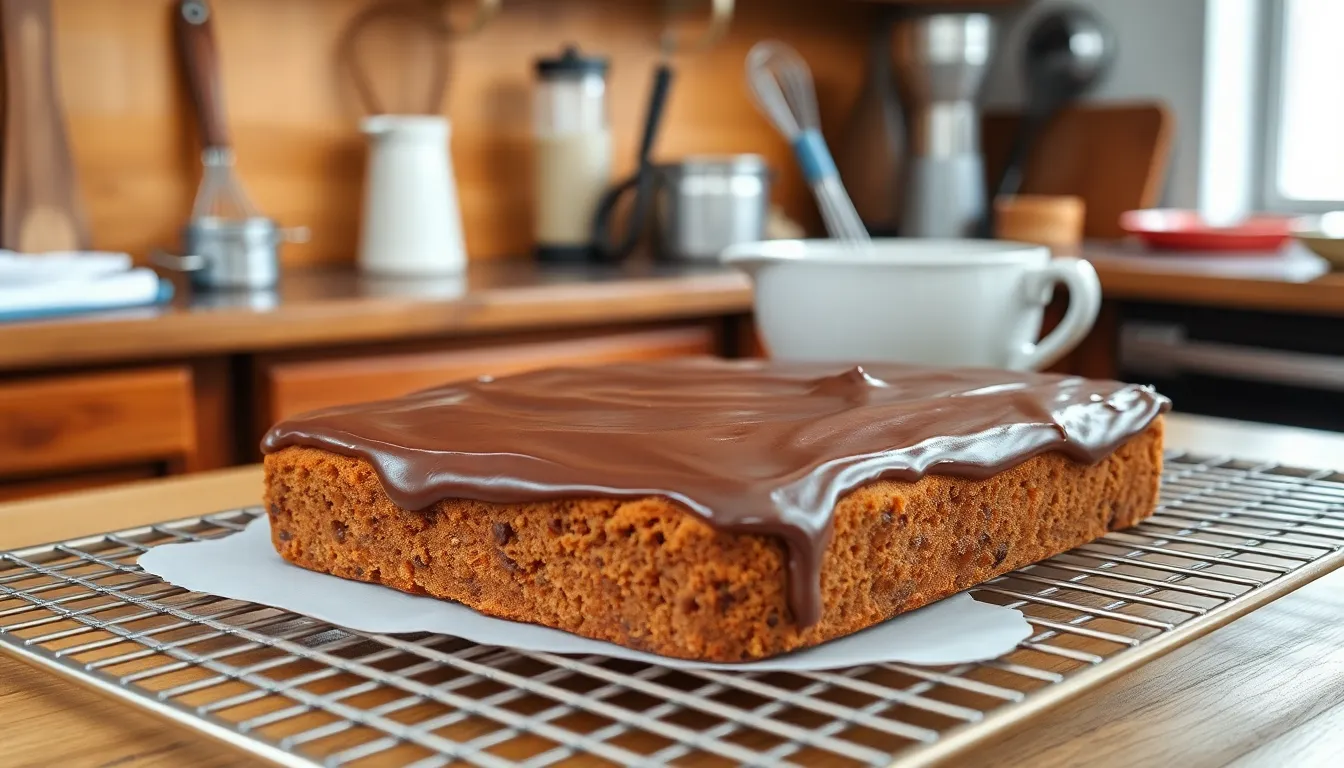
Cake is Too Dense or Heavy
Your Texas sheet cake likely became dense because you overmixed the batter after adding the flour. Stop mixing as soon as the flour disappears to maintain the cake’s signature light texture. Cold ingredients can also create density issues, so ensure your eggs and buttermilk reach room temperature before mixing. Another culprit might be expired baking soda, which loses its leavening power over time and creates a heavy cake.
Frosting Won’t Set Properly
The frosting stays runny when you add too much milk or pour it over a completely cooled cake. Measure the milk precisely and pour the warm frosting over the hot cake immediately after removing it from the oven. If your frosting seems too thin, whisk in additional powdered sugar one tablespoon at a time until you achieve the right consistency.
Cake Surface Cracks or Pulls Away from Edges
Overbaking causes the cake surface to crack and pull away from the pan edges. Remove your cake when a toothpick inserted in the center comes out with just a few moist crumbs attached. The cake continues cooking from residual heat even after leaving the oven. Check for doneness 2-3 minutes before the recommended baking time to prevent overbaking.
Uneven Baking or Raw Center
Hot spots in your oven create uneven baking results. Rotate the pan halfway through baking if you notice one side browning faster than the other. A raw center usually indicates your oven temperature runs low, so consider using an oven thermometer to verify accuracy. Dark pans absorb more heat and can cause the bottom to cook faster than the top.
Frosting Separates or Looks Grainy
Butter that’s too cold creates a grainy frosting texture. Allow your butter to soften to room temperature before starting the frosting process. Adding powdered sugar too quickly can also cause separation, so whisk it in gradually. If separation occurs, continue whisking vigorously until the mixture comes together smoothly.
Cake Sticks to the Pan
Insufficient greasing or skipping parchment paper causes sticking issues. Line your entire pan with parchment paper, leaving overhang on the sides for easy removal. Even with parchment paper, lightly grease the bottom and sides of your pan to ensure easy release. Allow the cake to cool completely before attempting to remove it from the pan.
Bitter or Overpowering Coffee Flavor
Using too strong coffee or adding it while too hot can create an overpowering bitter taste. Brew regular strength coffee and let it cool slightly before adding it to your batter. The coffee enhances the chocolate flavor without dominating it, so measure carefully according to the recipe specifications.
Conclusion
You now have everything you need to master this iconic Texas dessert. This recipe delivers the perfect combination of rich chocolate flavor and incredibly moist texture that makes Texas sheet cake so beloved across the country.
The beauty of this cake lies in its simplicity and reliability. Whether you’re feeding a crowd at a potluck or treating your family to a special dessert you can count on consistent delicious results every time you bake it.
Don’t forget that your cake will taste even better tomorrow as those flavors continue to develop. With proper storage techniques and all the variations we’ve covered you’ll never run out of ways to enjoy this classic treat.
Now it’s time to preheat that oven and create your own perfect Texas sheet cake!

